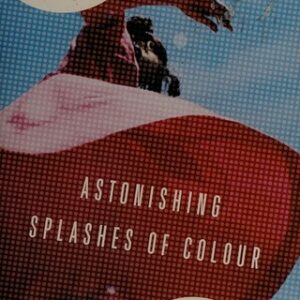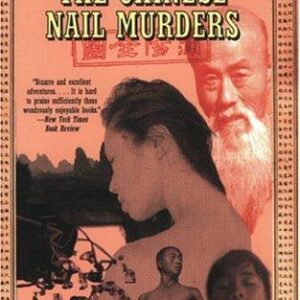Not a Good Day to Die
$18.00
| Title | Range | Discount |
|---|---|---|
| Trade Discount | 5 + | 25% |
- Description
- Additional information
Description
Award-winning combat journalist Sean Naylor reveals a firsthand account of the largest battle fought by American military forces in Afghanistan in an attempt to destroy al-Qaeda and Taliban forces.
At dawn on March 2, 2002, America’s first major battle of the 21st century began. Over 200 soldiers of the 101st Airborne and 10th Mountain Division flew into Afghanistan’s Shah-i-Kot Valley—and into the mouth of a buzz saw. They were about to pay a bloody price for strategic, high-level miscalculations that underestimated the enemy’s strength and willingness to fight.
Naylor, an eyewitness to the battle, details the failures of military intelligence and planning, while vividly portraying the astonishing heroism of these young, untested US soldiers. Denied the extra support with which they trained, these troops nevertheless proved their worth in brutal combat and prevented an American military disaster.Praise for Not a Good Day to Die
“If you liked Black Hawk Down, you’ll not be disappointed by Not a Good Day to Die…Extraordinary.”—New York Post
“Naylor has doggedly pursued the full story of Operation Anaconda from the time he was ’embedded’ with 101st Airborne Division troops who fought in the battle…often against the wishes of [U.S.] commanders…an admirable job of exposing [Operation Anaconda’s] many shortcomings.”—The Washington Post
“The best full-scale history of Operation Anaconda to date.”—Booklist
“Excellent.”—The Cleveland Plain DealerSean Naylor was a senior writer at the Army Times for over 20 years, where he covered the Afghan mujahideen’s war against the Soviets and American military operations in Somalia, Haiti, Bosnia, Afghanistan, and Iraq. His coverage of Operation Anaconda earned him the White House Correspondents’ Association’s prestigious Edgar A. Poe Award. Naylor was named one of the 22 most influential “unsung” print reporters in Washington by American Journalism Review in May 2002.It was a raw, biting wind that swept down from the Hindu Kush in the first weeks of 2002, and the militiamen guarding the Ariana Hotel in downtown Kabul stamped their feet and blew on their hands to fight off the chill.
Behind them the hotel sat squat, yellow, and ugly. The Ariana was owned by the Afghan government, which in reality meant whichever guerrilla army happened to be in charge of Kabul at the time. It also meant the hotel had played several cameo roles in the decade of civil war that had wracked Afghanistan since the pro-Soviet government fell to the mujahideen in 1992. When the Taliban army of fundamentalist Muslim students routed the weak central government in 1996, their first order of business had been to drag Najibullah, the last pro-Soviet Afghan dictator, from the United Nations compound in which he and his brother had sheltered since their government fell in 1992. After torturing them, the Taliban death squad murdered the brothers and then hung their bodies from a makeshift scaffold in the traffic circle in front of the Ariana. Thereafter, the Taliban used the hotel as an R & R spot for troops rotating back from the front line in the war against the Northern Alliance forces of Ahmad Shah Massoud, and as a way station for Pakistani volunteers en route to the front. By way of payback, a Northern Alliance jet dropped a bomb on the hotel in 1997.
Now the tables had turned again. Al Qaida, the Islamist terrorist organization that had found a welcoming home in Afghanistan under the Taliban, had hijacked four planes in the United States and flown two of them into the World Trade Center and one into the Pentagon, killing thousands and stirring the world’s only superpower to action. The Americans had come to Afghanistan, embraced the Northern Alliance, and driven the Taliban from power. And so it was that the guards lounging by the large concrete steps that led up to the Ariana’s main entrance were tough-looking Northern Alliance fighters, hard men down from the Panjshir Valley whose fingers never wandered far from the triggers of their Kalashnikov assault rifles. Some of these men had been fighting—against the Soviets, Najibullah’s regime, other mujahideen militias, and the Taliban—for more than twenty years, and it showed on their dark, worn faces and dirty, calloused hands.
But the balance of power had not shifted completely in the Northern Alliance’s favor. Not yet. The big dog on the block was the United States, and so while the Panjshiri guards shivered outside in their motley camouflage uniforms provided by the Central Intelligence Agency, inside the Ariana’s bullet-scarred walls the Americans held court. The CIA had rented the entire hotel, retained the staff, and set up its Kabul station there. It made sense for the spooks to use the Ariana. It was centrally located, just a couple of blocks from the Presidential Palace, and the safe house being used by the Special Forces, but it was protected from the busy street by a ten-foot wall. The only other defenses the Americans had added were a string of concertina wire atop the wall and a sandbagged guard post on the flat roof, manned twenty-four hours a day by a couple of Northern Alliance fighters.
Easy living it wasn’t. The plumbing was atrocious, even by Afghan standards, and the hotel was in a general state of disrepair. But it was warm, and the dining room still offered simple but delicious dishes of beans and rice and other staples of Afghan cuisine.
On this frigid mid-January afternoon a handful of men were gathered in one of the hotel’s upstairs rooms for a meeting. The CIA personnel conducted most of their meetings in this room during those first turbulent months after the fall of Kabul, but on this occasion only one agency officer was present—a thin, bearded man with long sandy hair called John, who was the deputy chief of station. The rest of the men were soldiers, special operators from the units that had been at the forefront of the war in Afghanistan. Like John, they were dressed in civilian clothes and wore their hair longer than most American soldiers are allowed. All sported the beards that were ubiquitous among American special operators and intelligence operatives in Afghanistan. Most were armed with M4 carbines or 9mm Beretta pistols.
It was a dark-walled room made even darker by the curtains drawn to prevent any snipers from drawing a bead on those inside. Dust motes swam in a single shaft of intense sunlight that exploited a small gap between the curtains. A lamp resting on an end table cast shadows on a floor covered by an Afghan rug, and the men sat on a tatty, overstuffed sofa and similarly worn but comfortable chairs.
As the Americans sipped green tea from a service that a member of the hotel staff had set on a glass-topped coffee table, the mood was businesslike. The Taliban had been defeated, the Northern Alliance had swept into Kabul, and the whole country was—in theory—under the control of the Americans and the Afghan warlords with whom they had allied themselves. But the men in the room were not celebrating. The Taliban were gone and Al Qaida’s guerrillas were on the run, but there was still much to do. Six weeks earlier the Americans thought they had Al Qaida’s leaders holed up at Tora Bora in the White Mountains that straddle the border with Pakistan. Reluctant to put too many American troops on the ground, U.S. commanders had relied on their Afghan allies backed up by Special Forces to snare Osama bin Laden and his henchmen. But this time the Americans’ faith in their militia allies was misplaced, and a failure to block escape routes into Pakistan from Tora Bora meant bin Laden and hundreds of Al Qaida’s most hardened fighters had slipped the net.
So long as those guerrillas remained at large, the Americans knew they could not rest. And so as usual in these brainstorming sessions, which John convened daily in his excuse for a sitting room, the talk this afternoon was where to focus next.
As the meeting was breaking up, John looked across the table and spoke directly to one of the special operators—an Army officer dressed in a thick, long-sleeved shirt with an Afghan scarf around his neck. Clipped into the waistband of his cargo pants was a black leather holster in which nestled a semiautomatic Glock pistol with a twenty-round extended clip. Over six feet tall with dark hair and a goatee that framed an open and honest face, the officer was forty years old, yet still had the lean, hard physique of the track and field champion he had been in his youth. He exuded the self-confident air of a man used to not just living but succeeding on his wits. His name was Pete Blaber and he was a lieutenant colonel in 1st Special Forces Operational Detachment—Delta, better known to the public as “Delta Force.”
The agency was getting a lot of reports that Al Qaida forces were regrouping in a mountainous region south of Gardez in eastern Afghanistan’s rugged Paktia province, John said. “What’s it called?” Blaber asked. The CIA officer told him. Blaber, who had been in Afghanistan for a month and thought he knew the lay of the land, had never heard of the place. “How do you spell it?” he said, eyes narrowing with curiosity as he grabbed a mechanical pencil to jot the name down in his day planner.
As Blaber scribbled, the CIA officer spoke each letter in turn: “S-H-A-H-I-K-H-O-T.”
US
Additional information
| Weight | 17.4 oz |
|---|---|
| Dimensions | 1.0000 × 6.0000 × 8.9700 in |
| Imprint | |
| Format | |
| ISBN-13 | |
| Author | |
| Audience | |
| BISAC | |
| Subjects | Al Qaeda, military history, dad gifts, gifts for history buffs, war books, iraq war, top books for men, afghanistan war books, iraq war books, special operations, us history, War on Terror, Afghan War, afghanistan books, us military history, american wars, operation anaconda, operation enduring freedom, black hawk down, political science, gifts for dad, war, american history, books for dad, biography, BIO008000, military, middle east, taliban, history, iraq, terrorism, military books, army, special forces, biographies, POL037000, 21st century |











